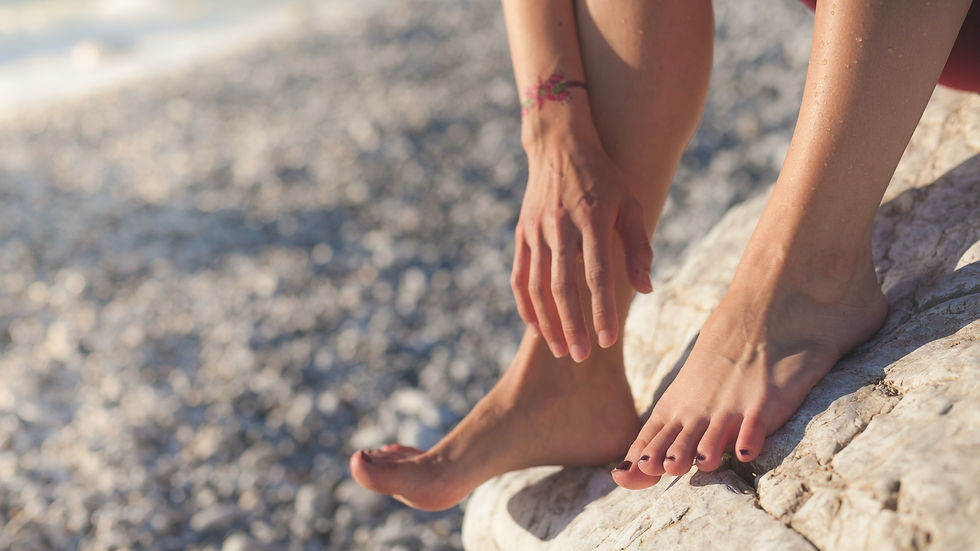Feet do an incredible job from the moment we start walking after that crawling phase. They take our "load", run with us, walk or sit dormant under the desk for hours at a time. So what anatomically are they made of, what crops up when they are ignored and how can we keep them happy?

The Anatomy: Foot and Ankle

Although similar arrangement of bones to the hand and wrist, the build is heavier for strength & weight bearing stability instead of being as precise and mobile as the hand.
Sole of the foot is supported by 5 metatarsal bones for the 5 toes (see diag below) and the heel is made up of the calcaneus bone.
3 main bone groups:
tarsus (ankle)
metatarsus (sole)
Phylanxes (toes)
Ligaments are strong bands or straps of fibrous tissue that provide support to bones and link bone ends together in and around joints ie ankle joint. They are made of collagen - a tough, elastic protein. Many ligaments bind together the ankle joints. The foot ligaments store energy as they stretch when the foot is placed down and use it to recoil and shorten to create that spring in the step!
Feet Issues
Heaps of them no doubt but i'm only going to mention a couple that can cause discomfort.
Morton's Neuroma: a tumour growing from a nerve made up mainly of nerve cells causing pain on the top of the foot with pressure. Running, walking and jumping can all place stress on this area so can ill fitted shoes.
Solution:see a professional for diagnosis first, rest, ice and wearing the right footwear that gives room for the toes so no high heels!
Inflammation of the tendons surrounding the sesamoid bones: these bones are not attached to another bone but are embedded in a tendon or joint. There is one on each side of the foot back from the toes. The pain is felt over the bone and increases with activity. It can be caused by high arches causing you to run on the balls of your feet.
Solution: see a professional for diagnosis first, rest and ice and wearing padding inside the shoes may be necessary.
Plantar Fasciitis: plantar fascia connects the heel to the base of the toes and when it comes under stress pain is felt in the heel when walking or running on hard surfaces & with tight calf muscles. It can also be felt with high or fallen arches, wearing the wrong shoes and with poor flexibility.
Solution: rest, ice and then heat and massage to promote blood flow and healing
The Alternative Approach to Feet
The feet are where spirit meets matter. So a sole turning away from the Earth (club foot) or where it is very high (claw foot/ pes cavus) can indicate someone who is very sensitive and in need of reassurance to keep their feet firmly planted on this planet.
Flat feet and fallen arches on the other hand indicate people who are rooted to the Earth and often down to earth who may be a little too structured. Dance, movement and a good sense of humour is helpful!


Commentaires